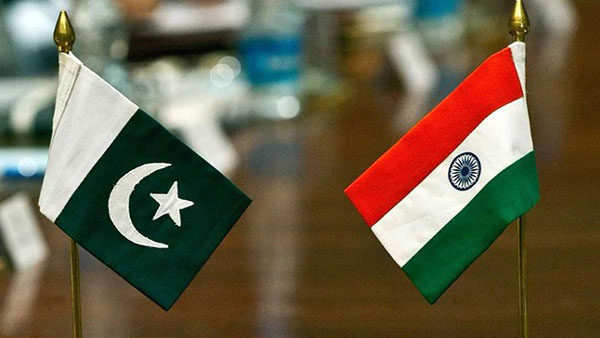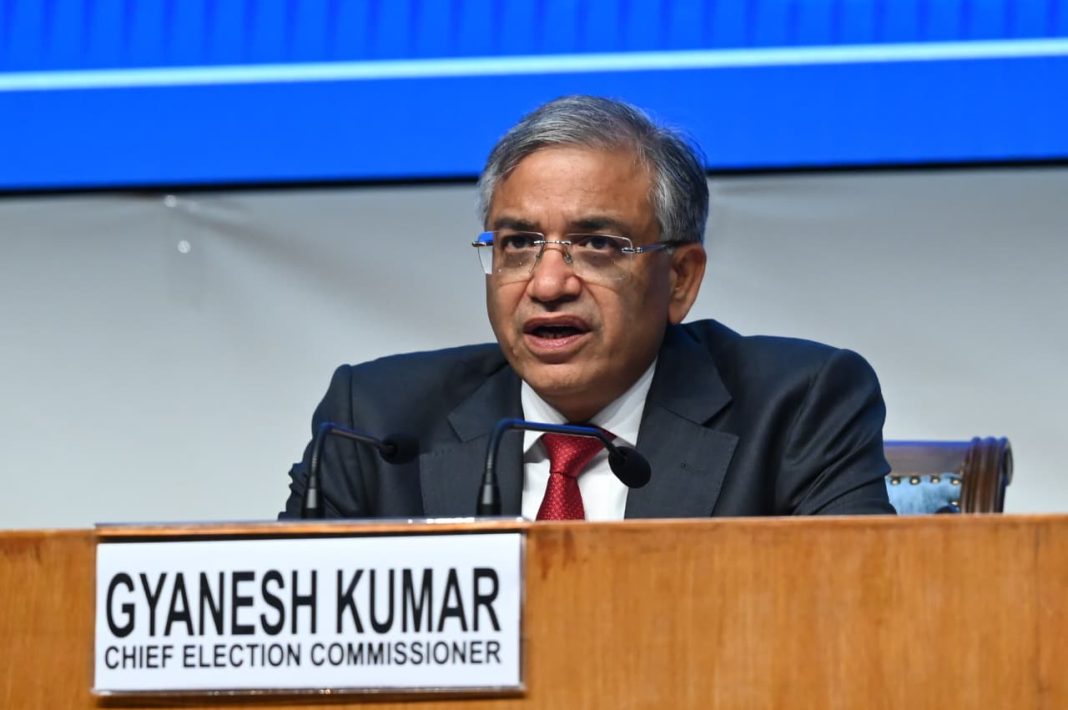Satyabrat Borah
As India and Pakistan commemorate their 78th year of independence in August 2025, the journey from their shared history under British colonial rule to their present trajectories offers a compelling study in contrast. Born from the partition of 1947, these two nations have carved distinct paths shaped by their political choices, economic policies, military strategies, and social transformations. While New Delhi radiates confidence as a rising global power, Islamabad grapples with persistent challenges that have slowed its progress. A comparative analysis of their economic, military, social, and other parameters reveals the divergent fortunes of these South Asian neighbors, with India surging ahead and Pakistan struggling to find stable footing.
India has emerged as a powerhouse economically, while Pakistan lags significantly. India’s GDP in 2025 is estimated at approximately $3.5 trillion, making it the fifth-largest economy globally, with a purchasing power parity (PPP) of $13.1 trillion, ranking third worldwide. This economic heft is underpinned by a robust services sector, burgeoning technology industry, and increasing manufacturing capabilities through initiatives like Make in India. The country’s foreign exchange reserves, standing at $627 billion, provide a cushion for economic stability and strategic investments. India’s per capita income, though modest at around $2,731, reflects steady growth, supported by a young, dynamic workforce and a labor force of 593 million. The nation’s economic reforms, initiated in 1991 under Prime Minister P.V. Narasimha Rao, have borne fruit, fostering a market-driven economy that attracts global investment. India’s startup ecosystem, one of the largest in the world, thrives with unicorns in fintech, edtech, and healthtech, signaling innovation and adaptability.
Pakistan’s economy faces structural challenges. With a GDP of roughly $290 billion and a PPP of $1.34 trillion, Pakistan ranks far lower on the global stage. Its per capita income, around $1,500, is lower than India’s, and economic growth is hampered by high inflation, a ballooning external debt of $92 billion, and meager foreign reserves of $13.7 billion. Pakistan’s economy remains heavily reliant on agriculture and textiles, with limited diversification. Political instability, coupled with security concerns, has deterred foreign investment, while dependence on foreign aid, particularly from China and Gulf nations, underscores its economic fragility. Posts on X reflect this disparity, with some noting that individual Indian states now surpass Pakistan’s GDP, a remarkable shift from 1947 when Pakistan was economically ahead.
India holds a commanding edge over Pakistan militarily, reflecting its strategic ambitions and financial muscle. According to the Global Firepower Index 2025, India ranks fourth globally with a Power Index score of 0.1184, while Pakistan stands at 12th with a score of 0.2513. India’s defense budget for 2024–25, estimated at $86.1 billion, dwarfs Pakistan’s $10.2 billion, enabling significant investments in modernization. India’s military manpower is formidable, with 1.46 million active personnel, 1.15 million reserves, and 2.52 million paramilitary forces, drawing from a population of 1.41 billion, with 23.9 million reaching military age annually. Its air force, with 2,229 aircraft including advanced Rafale and Su-30MKI jets, and a navy with 293 vessels, including two aircraft carriers, cement India’s status as a blue-water naval power capable of projecting force across the Indian Ocean. India’s nuclear arsenal, estimated at 172 warheads, adheres to a No First Use policy, supported by a developing nuclear triad involving land, air, and sea-based delivery systems like the Agni-V missile and INS Arihant submarine.
Pakistan, while maintaining a credible military, operates on a smaller scale. Its 654,000 active personnel, 550,000 reserves, and 500,000 paramilitary forces are drawn from a population of 252 million, with 4.79 million reaching military age annually. Pakistan’s air force, with 1,399 aircraft including JF-17 Thunder jets, is smaller but tactically focused, benefiting from Chinese and Turkish partnerships. Its navy, with 121 vessels and no aircraft carriers, is limited to green-water operations, primarily for coastal defense. Pakistan’s nuclear arsenal, roughly 170 warheads, adopts a first-use doctrine, with tactical nuclear weapons like the Nasr missile aimed at countering India’s conventional superiority. Despite its battle-hardened forces and strategic alliances, Pakistan’s military capabilities are constrained by its limited budget and economic challenges, relying heavily on foreign suppliers, particularly China, for 82% of its arms imports.
India’s diversity and scale present both opportunities and challenges. With a population of 1.41 billion, India is a mosaic of languages, religions, and cultures, striving for inclusivity despite occasional tensions. Its Human Development Index (HDI) score, around 0.644, reflects progress in education, healthcare, and life expectancy, though disparities persist between urban and rural areas. India’s literacy rate hovers near 80%, and initiatives like Digital India have expanded internet access to over 700 million users, fostering digital inclusion. Women’s participation in the workforce and politics is rising, though gender gaps remain. India’s global cultural influence, through Bollywood, cuisine, and yoga, enhances its soft power, while its diaspora, numbering over 18 million, contributes significantly to remittances and global advocacy.
Pakistan, with a population of 252 million, faces steeper social hurdles. Its HDI score of 0.540 trails India’s, reflecting lower life expectancy, education levels, and income. Literacy stands at around 60%, with significant gender disparities, particularly in rural areas. Pakistan’s social fabric is strained by sectarian divides and security issues, which hinder development. Urban centers like Karachi and Lahore show pockets of progress, but rural areas lag, with limited access to quality education and healthcare. Social media sentiment on X highlights Pakistan’s challenges, with some users attributing its struggles to prioritizing security over public welfare, a contrast to India’s broader developmental focus.
In terms of infrastructure, India’s vast network of 6.37 million km of roadways, 311 airports, and 56 major ports supports its economic and military ambitions. Its merchant marine fleet of 1,859 vessels ensures robust trade connectivity, while investments in high-speed rail and smart cities signal forward-thinking development. Pakistan’s infrastructure, with 264,175 km of roadways, 116 airports, and three major ports, is less extensive, limiting its logistical capacity. Its merchant marine fleet of 60 vessels underscores its smaller global trade footprint. India’s logistical superiority enhances its ability to sustain military operations and economic growth, while Pakistan’s constrained infrastructure reflects its economic limitations.
India has cultivated strategic alliances with the United States, France, Russia, and the QUAD, positioning itself as a counterweight to China in the Indo-Pacific. Its leadership in forums like the G20 and BRICS amplifies its global voice. Pakistan, aligned closely with China through the China-Pakistan Economic Corridor (CPEC) and with Turkey, maintains regional influence but struggles with international isolation due to terrorism concerns and economic woes. India’s diplomatic outreach, backed by its economic and military strength, far outpaces Pakistan’s, which relies on strategic partnerships to offset its limitations.
Sports and cultural achievements further highlight the divergence. India’s cricketing dominance, with stars like Virat Kohli and a thriving Indian Premier League, contrasts with Pakistan’s inconsistent performance, despite talents like Babar Azam. India’s Olympic medal tally, though modest, is improving, while Pakistan’s remains negligible. Culturally, India’s global footprint through films, literature, and technology overshadows Pakistan’s, which, while rich in heritage, struggles to project influence amid internal challenges.
The nuclear dimension adds complexity to this comparison. Both nations’ arsenals deter full-scale conflict, but India’s strategic restraint contrasts with Pakistan’s first-use posture, raising the stakes in any escalation. Recent tensions, such as the 2025 Pahalgam attack and India’s Operation Sindoor, underscore the fragile balance, with India’s superior conventional forces offset by Pakistan’s nuclear deterrence and asymmetric tactics.
As India and Pakistan mark 78 years of independence, their trajectories reflect starkly different choices. India’s investment in economic liberalization, military modernization, and global integration has propelled it toward superpower status. Pakistan, constrained by economic instability and security-centric policies, struggles to match its neighbor’s pace. While India shines on the global stage, Pakistan’s challenges underscore the need for reform to harness its potential. The path forward for both nations lies not in rivalry but in fostering stability and cooperation to ensure a peaceful South Asia.




